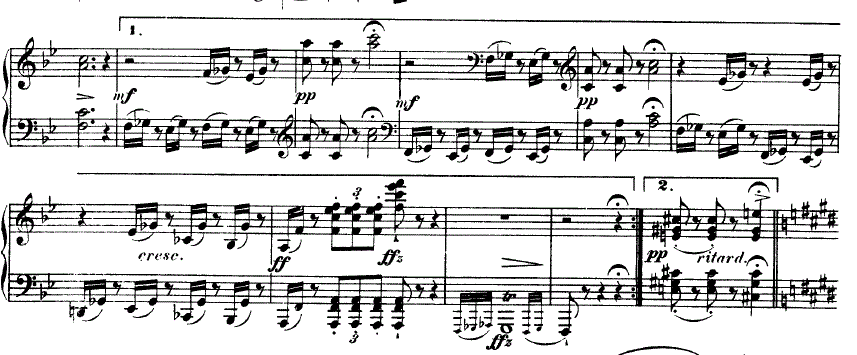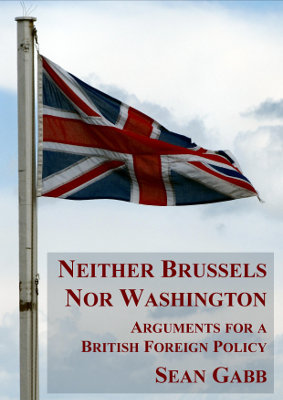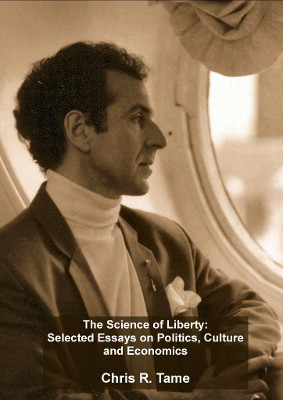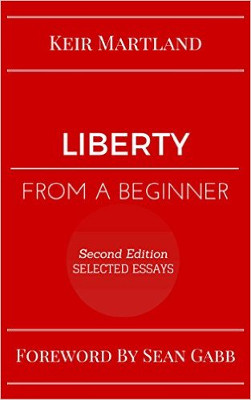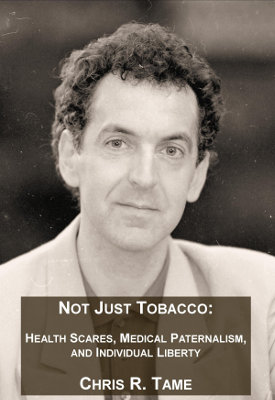
|
THE LIBERTARIAN ENTERPRISE Number 877, June 19, 2016 "Gun control is the idea that it's better to see a woman dead in an alley, strangled with her own pantyhose, than to see her with a gun in her hand."—T.D. Melrose
Thoughts on the Schubert Piano Sonata in B flat major, D.960
Special to L. Neil Smith's The Libertarian Enterprise If I add up the hours I have spent listening to music and the hours spent doing anything else, the list of my published works gives an unbalanced view of my interests. Even when I am not listening to music, there is something playing in my head. There is music playing in my dreams. Every memory in over half a century of life is associated with some piece of music. I first noticed the obsession when I was five, and I walked into a room in my grandmother's house where the wireless was playing the Blue Danube. Somehow, I already knew the piece, as I could recognise where the A major introduction was heading. I felt pleased with myself when the principal waltz theme confirmed that I was right. I now realise that, as I sat on the floor and listened to the whole piece, I was totally and hopelessly lost. I am told that all this may be symptoms of autism. Perhaps it is. If so, however, I can think of worse symptoms. Music gives a pleasure that can be endlessly repeated and that has no unpleasant side- effects. It relieves anxiety and sadness. It is an open door to perceptions of the transcendent. If people spent more time listening to music, the world might be a better place. What music anyone likes seems to be a combined effect of cultural experience and personal nature, though it also seems that certain kinds of music are more likely over the long term to produce tranquillity of mind. But, if you like rock and roll, as Chris Tame did, you should listen to that. If you like traditional Japanese music, you should listen to that. For myself, I have, with a few wobbles either side, believed nearly all my life that the greatest collective work of the imagination is the music written by Germans and Czechs between about 1770 and 1830. I worship Mozart and Schubert. I respect Beethoven. I admire Haydn. I like more obscure composers like Vanhal and Rejcha. I appreciate other composes mostly so far as they approach the conventions set in this period. I will not try arguing for my personal belief that this music is better in the abstract sense than any other. I will only say that this is the music for me. I turn now to my main subject, which is Schubert's Piano Sonata in B flat major, D.960. He wrote this in the last year of his life, when he probably knew he was dying. It is a long work -- longer than any piano sonata by Mozart and Haydn -- and it shows much influence of Beethoven. He performed it at least once in his last months, but it was not published until more than a decade after his death. It was admired by Brahms and I think by Mendelssohn, but otherwise neglected. Even Schumann, who was one of the first to recognise Schubert's genius, thought little of it. Together with the other two last sonatas, it was neglected until the 1920s, since when it has gradually emerged as one of the core works of the piano repertoire. How it could have taken so long for something so wonderful to be accepted as a masterpiece is a mystery. On the other hand, there is a very large amount of first class piano music from the century and a half to 1900, and hardly any of Schubert was taken seriously until a time almost in living memory. The Sonata opens in the home key with a melody simple enough for a cradle song. This terminates in a menacing trill for the left hand, then moves to a more agitated passage in G flat major that culminates in a restatement of the opening theme in F major. From here, the work grows in scale and complexity. Unlike Mozart and Haydn, Schubert liked to write his expositions in three keys, moving not directly to the dominant or relative major or some other related key, but through an intermediate key. The technical details are beyond my understanding, but the effect is always one of extraordinary beauty and a sense that time has slowed or been stopped. In this sonata, which is his last and perhaps his greatest, he combines both beauty and a structure so vast that, at times, it never seems to end and is not wanted to end. I may have listened to the work several hundred times so far, and it is on the long list of works that I want, given the right circumstances, to listen to again on my deathbed. I move now to the matter of performances. I speak as a pianist of less than mediocre ability. On the other hand, you do not have to be a cobbler to know if a shoe pinches or fits. I have, in the past few months, listened to more than a dozen performances on CD and on YouTube. If none of them is actually bad, some strike me as plainly better than the others. I will make two observations. First, there is the matter of repeats. Here are two performances, one by Alfred Brendel, the other by Mitsuko Uchida: https://www.youtube.com/watch?v=KMlGcHG7heU https://www.youtube.com/watch?v=l7cc2FD06FM The most obvious difference is in how each deals with the repeat in the first movement. As it emerged towards the end of the eighteenth century, sonata form involves a first theme in the home key, a second theme in a related key, a repeat of both, a development section in various keys, and a recapitulation, more or less altered, of both themes in the home key. This was not a fixed scheme. For example, in his Haffner Symphony, K.385, Mozart does without a second subject and a repeat of the exposition. The classical composers were not slaves to convention. After all, they helped set them. They broke with them when they wanted to, and kept with them when they wanted to. Now, the score of the Schubert c.960 calls for a repeat, and there is a nine bar coda to the first statement of the exposition that leads into the repeat:
These come at 5:05 in the Uchida recording. Brendel omits them, passing immediately from first statement to the development section. I have read his claim that the nine bars are of little musical value, and that the work is already long enough without a repeat of the exposition. I find this a surprising claim, as Brendel has said on other occasions that a performer's duty is to make as faithful a reproduction as he can of what is in the score. But he is not alone in omitting the repeat. Daniel Barenboim also does it. So do many other performers. I suppose there is some point to the omission in a live performance. The first movement alone is around twenty minutes with the repeat. A live performance of all three last sonatas could become very long. The concentration and railway timetables of the audience may require some compromise on length. I see no point, though, in a recording. It disturbs me in even an otherwise excellent performance -- which Brendel achieves -- when those nine bars and the repeat are not there. Schubert calls for a repeat. He provides different codas for first statement and repeat. He knew what he was doing, and his wishes ought to be respected -- especially when not respecting them so changes the balance of the first movement. About a year ago, I had an exchange with John Kersey on the general matter of repeats. They seem to have gone out of fashion after the Great War. I explained this by the limitations of recording technology. I have several boxed sets of symphonies by Mozart, Beethoven and Schubert on 78rpm disks, all from before 1940. All of them omit the repeats. Even so, the boxed sets contain between four and eight disks. Recording the whole works would, in many cases, have made the sets unmanageably large and expensive. This may not, though, have been the whole reason. I have heard recordings on YouTube of live performances, made on magnetic tape during the War, by Furtwangler of several Beethoven symphonies. These omit the repeats. It may be that hearing works more often on disk than in the concert hall had changed the audience expectations. But John's view was that the fashion was autonomous of technology. The middle decades of the twentieth century were a time when taste was for things to be simplified and faster. Repeated expositions were a sitting target. Whatever the case, the fashion of the past fifty years has been to play works in full. There is a greater respect for the printed score that has spread from the authenticity movement into the performance mainstream. And the LP, the CD and now the various digital file formats have taken away any limitations on the length of a recorded work: you can now fit the entire output of Mozart or Bach onto a memory card smaller than most fingernails. We no longer live in an age when not stripping out a repeat adds four ounces and five shillings to a boxed set. I return to the Schubert D.960. As said, he calls for a repeat of the first movement exposition. He provides different music for first and second statements. That is what he wants. I have written very little music, but I have written a large amount of prose, and I can think of few occasions when editorial cuts or other changes have improved my own work. I defer in general to a man like Alfred Brendel, but I disagree that the nine bars are of little importance. They are a surprising break with what goes before, and seem to be a kind of teaser for the development. They move the listener into the repeat, but also make him reconsider what he may so far have thought of the exposition. I think cutting these bars and the repeat is a serious mistake. Second, there is the matter of tempi. Here is a recording by Sviatoslav Richter: https://www.youtube.com/watch?v=lncNcNtGkJY He plays the repeat, but takes the whole at a pace that seems to dissolve its structure. The second movement in particular comes close to incoherence. So far as I can tell this is the custom behind what used to be the Iron Curtain. I have a recording of the work made by Klara Würtz, a Hungarian pianist who is my favourite interpreter of the Mozart sonatas. She takes the first and second movements at a pace that only borders on the acceptable. I also heard a performance of the work in Prague last year. The first and second movements went at a pace even slower than Richter usually managed. The opening theme almost collapsed into a succession of staccato chords. I think the idea of taking the work slowly is to reveal its emotional depths. Or it may be a survival of the fashion that emerged in the late nineteenth century of playing everything at funereal speed. I am not sure if this was another attempt at emotional depth, or if it was a necessary adaptation to the enlarged size of orchestras. Playing Beethoven at the speeds he marked needs unusual attention from an orchestra put together for playing Wagner. But, unless played at a brisk allegro, the D.960 speaks for itself. Nothing is gained from lingering over it. A performer cannot put in what the composer left out. And Schubert leaves nothing out. I said near the beginning of this essay that I would not put a case for the superiority of what is loosely called classical music. But it does have certain features that other kinds of music lack. In the first place, it is written. This makes it radically different from most kinds of folk music or the music of most other civilisations. It can have a complexity and a unity that repays endless attention. I will not say that other kinds of music lack depth, but theirs is a depth that is inevitably limited, and analysis of what is improvised for one performance is unlikely to go far. In the second place, I am not sure if much modern popular music can be detached from specific performances. At my daughter's Easter concert last month, the year six children sang a choral arrangement of Jon Bon Jovi's Livin' on a Prayer. This may not be music that I would normally listen to or appreciate. But the YouTube video that I have watched shows the music as only part of an overall product that includes things such as lighting and filming and the personality of the singer. Arranged for a chorus of children, it lost all its power. Classical music, on the other hand, is music in itself. It can be played by anyone with the required technical skills, and no performance, so long as the score is followed, can be seen as more authoritative than any other. A further point is length. I am not a snob. I do not dismiss popular music as worthless, though I find much of it uninteresting. I sometimes like Abba and the Beatles. I rather like Orchestral Manoeuvres in the Dark and some other pieces. For the most part, however, the music sounds over before it has begun. It is not for me the open doorway to transcendence that I mention above. Or it may not be length. Most songs by Schubert are no longer than a popular song. Some individual movements by Mozart or Haydn are even shorter -- the Allegretto from the K.570 Piano Sonata in B flat major, for example. I shall need to think more on this. Nonetheless, I remain glad of that day when I was five. Life without the music that I like would scarcely be worth living. Copyright © 2016 The Libertarian Alliance, All rights reserved.
Just click the red box (it's a button!) to pay the author
This site may receive compensation if a product is purchased |
